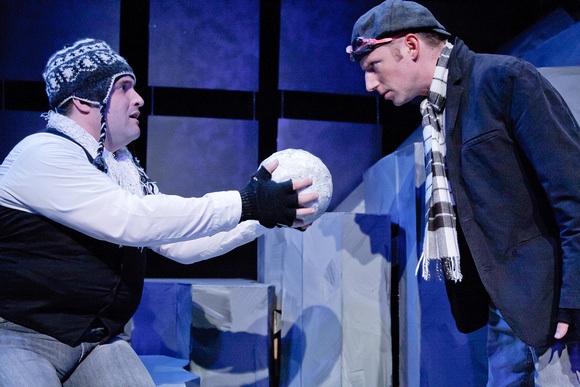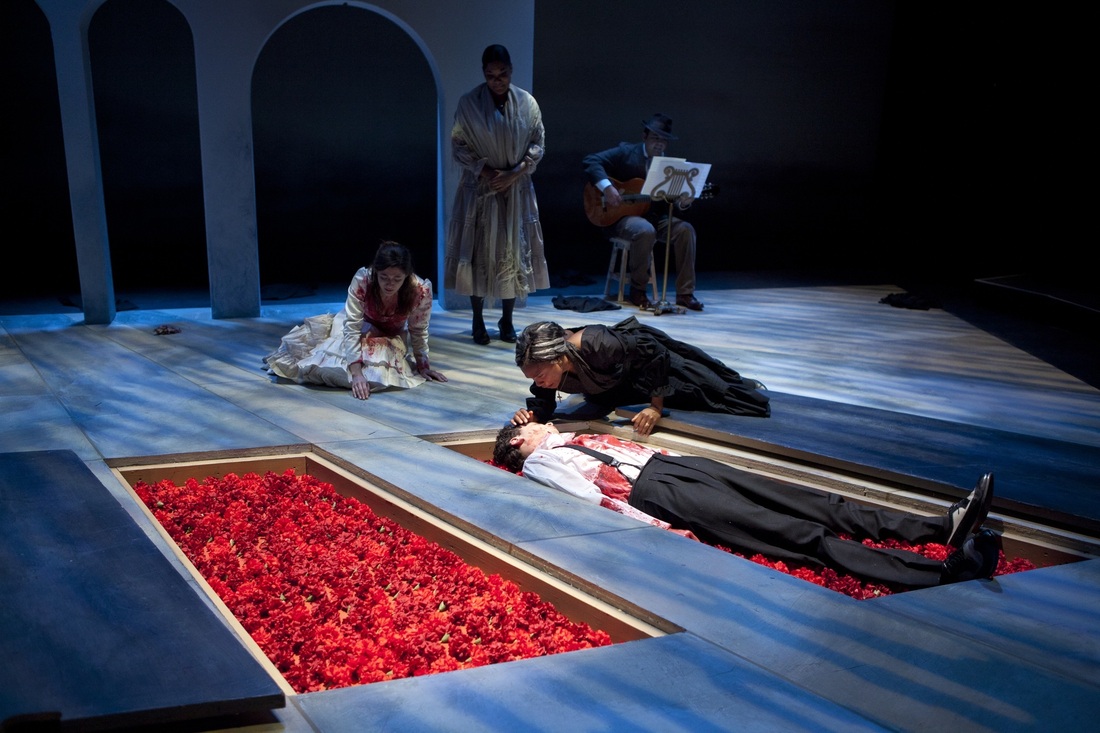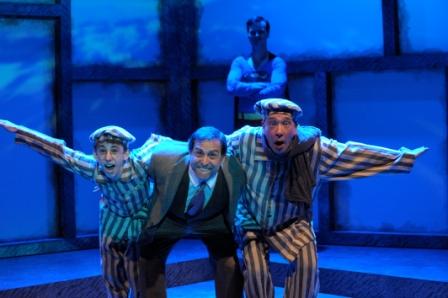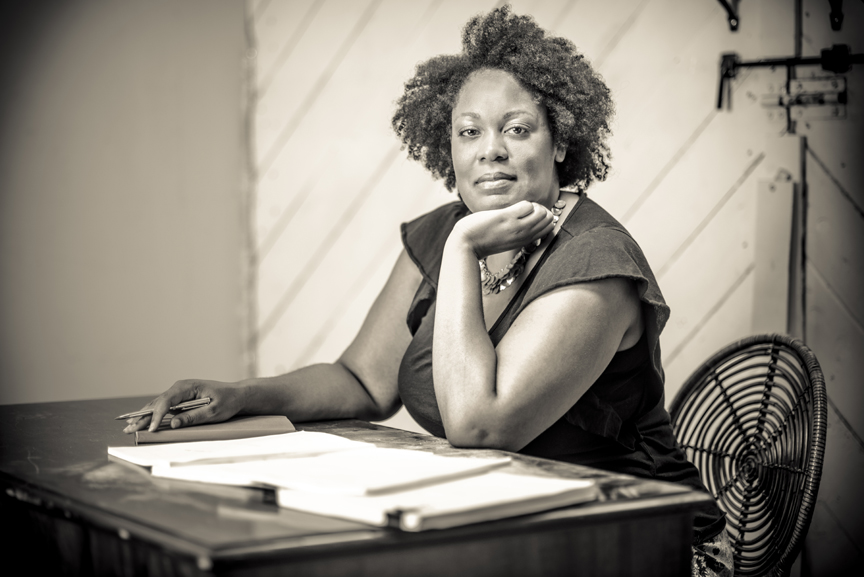|
Jacqueline Lawton: What was the first play that you ever directed? What did you learn from that experience that remains with you today?
Shirley Serotsky: I switched from an acting focus to directing while I was at North Carolina School of the Arts. Our projects increased incrementally in scope and length so we started with scenes, moved to one-acts, and then directed one-half of a full-length play for our final projects. I directed WHO’S AFRAID OF VIRGINIA WOOLF? and ended up working on the first two acts of the play. A moment I remember quite vividly was when my dean/teacher/mentor Gerald Freedman came to watch a run through during rehearsals. I’d staged a sort of prologue to the play—where we saw quick snapshot scenes of Martha getting ready for the party, George and Martha going to the party (I think?), then the pair at the end of their evening, walking up to the house together, Martha fumbling for keys—moments that I thought would bring us into the world of the play but in reality were totally extraneous and unnecessary. Gerald opened up my script after the run and pointed to the opening sequence. Albee had written: (Set in darkness. Crash against front door. Martha’s laughter heard. Front door opens, lights are switched on.) “Do you think you’ve staged a more powerful opening than what Albee wrote--hearing Martha’s laugh in the dark?” Gerald asked. Of course I hadn’t. Seeing George and Martha before we see them in that moment took all of the power out of the reveal. It was a lesson for me about respecting the text and trusting the playwright, and not trying to fix that which is not broken. JL: Why did you decide to get into theatre? Was there someone or a particular show that inspired you? SS: My twin brother and I were both performing--singing and playing piano--from a pretty early age. Our parents were both school teachers, and certainly there is something very linked to acting and performing in that career and no tougher audience than middle and high school students—so we posit that we got some of that from our parents. Because we were twins it was cute to have us sing or play a duet at school assemblies (“Bicycle Built for Two” springs to mind). We both ended up pursuing careers in the theater (my brother in an actor) and we’re lucky to have amazingly supportive and enthusiastic parents. When I was in fourth-grade I attended a local high school production of WEST SIDE STORY. We went to public schools in a town that was majority working class, but the district placed great value on its art and music programs. I hope they still do. The production was sold out, and I sat on my aunt’s lap the whole time (pity the person behind us). It was everything I’d hoped theater could be—thrilling, dramatic, tragic and beautiful. At the end I knew I wanted to be a part of this world, as soon as possible, and for a long time. Incidentally, Donna Lynne Champlin--the fourteen-year-old who played Maria in that production--has gone on to have a fantastically successful stage career. JL: What kind of work do you do to pay the bills? How do you balance this work with your work as a director? SS: I’m very fortunate to have a full-time position in the theater, as Director of Literary and Public Programming at Theater J. While schedules can sometimes be difficult to navigate; we’ve been able to work it out so far and I love that my work there informs by directing work; just as my directing work informs my work there. Sometimes too, they are one and the same! JL: In DC, we have the Capital Fringe Festival, the Intersections Festival, the Source Festival, the Kennedy Center's Page-to-Stage Festival, the Black Theater Festival, and the Hip Hop Theatre Festival. We also have the Mead Lab at Flashpoint Theater Lab Program. Have you participated in any of these? If so, can you speak about your experience? SS: The first fully produced show I directed in DC—TITUS, THE MUSICAL by Shawn Northrip--was part of the 2003 Summer Source Festival, while still in its previous iteration. That led to a full run of the show in Fall 2003. In winter of 2006 Shawn and I joined forces to create “Bouncing Ball Theatrical Productions” and for four years we self-produced work at the CapFringe Festival and Page-to-Stage---innovative non-traditional musicals. I also directed Laura Zam’s solo show COLLATERALLY DAMAGED at the 2007 Fringe. I directed one of the first full-length plays featured in the newer iteration of the Source Festival in 2010, after directing a 24-hour play and one-act in the years before. When I speak with early career directors I stress this point that no one just hands you a show to direct out of the blue. And while DC is a fantastic place to start and nurture a career, you still have to make your work known before you can expect anyone to “know your work”—these festivals provide wonderful, egalitarian opportunities for DC-based (and other artists). I place great value on the work I’ve been involved with at these festivals, and working with Shawn on Bouncing Ball helped create some of my most precious theater memories and relationships. In fact—the relationships I’ve developed with other artists through these opportunities have been some of the most important building blocks of my career here. I must also give a shout out to Gregg Henry, who introduced me to Shawn way back when in 2003; and who brings vision and inspiration to the artistic match-making he so often does in this community. He and the rest of the Page-to-Stage team at the Kennedy Center are a local treasure. JL: How many plays have you directed in the DC area? How many of them were written by women? By playwrights of color? How conscious are you selecting plays by women or people of color when deciding your season? SS: Okay. I count about thirty—that’s productions that were fully staged and produced at some level, not workshops or staged readings. About three of those were in educational settings. Written by women: eight; plus one classic play adapted by a woman; and then WORKING—for which a woman co-wrote the book, and which included 2 female composers and two female lyricists. So I don’t know how to count that—but let’s put the total at 9.5 for the sake of mathematics. That comes out to 31.7%, which is sadly, considerably better than the average of 18% that Gwydion Suilebhan reports, but still pretty lame. Playwrights of color: four; plus WORKING—which included two writers of color. So we’ll call that 4.5, which is also low but actually matched the disappointing stat of 15% that Gwydion reports. If I include workshop productions, the number bumps up to 7.5. In my work at Theater J I am very conscious of gender parity. Because of our specific mission, racial diversity can be trickier. But both of these questions are very much on our mind. JL: How do you feel the DC theatre community has addressed the issues of race and gender parity? How has this particular issue impacted you and your ability to work? SS: I think there’s a burgeoning awareness and I am glad. It’s a start. If awareness leads to change, and I think in some specific instances it already has, then even better. I’ve remained a little bit quiet on this issue, and I think that’s mostly because other artists in the community have tackled it so vocally and head on. Jackie—you’re addressing the awareness question in a quite wonderful and personal way with your artist profiles. So—more of that, yes! JL: If you could be direct at any theatre in DC, which would it be and why? SS: Any and all. I have plenty of love for DC-theatre to go around! JL: DC audiences are ... SS: Wicked smart. JL: DC actors and designers are ... SS: My inspiration, my team, my teachers, my friends, and my family (metaphorically and literally). JL: DC playwrights are … SS: Finding their voices in magnificent, divergent, shouts, outcry’s, songs and whispers. JL: DC critics are ... SS: For the most part—smart, engaged, and informed; continuing to explore and refine their craft just like the rest of us; a particularly stylish and cultured bunch. JL: What advice do you have for an up and coming DC based director or a director who has just moved to D.C.? SS: See above! Take advantage of the opportunities that this community offers you. Meet like-minded artists that you want to work with, find a community, an artistic family. Hone in on what you, specifically, bring to this art form and know why you do it. Assistant Direct for people whose work you respect and admire—recognize what you like about how they work, and also what you would do differently. Reach out to artists you respect in the community, at all levels. Invite them out to coffee to ask them about what they do and how they do it. More often than not, they’ll say “yes”. Read, see, talk, share. Care about things other than the theater. And I’ll quote the advice that Kathy Bates, the commencement speaker at my graduation from an arts conservatory shared with us: “Get a life”. As in, a life beyond the theater. Care about the world, your friends, your family; find ways other than your work to feed your soul. JL: What's next for you as a director? Where can we keep up with your work? SS: The next show I’m directing is A MAN, HIS WIFE, AND HIS HAT by Lauren Yee at the Hub Theatre in April 2013. You can follow my work with Theater J and my personal website is shirleyserotsky.com.
0 Comments
Your comment will be posted after it is approved.
Leave a Reply. |
My BlogI'm a playwright, dramaturg, and teaching artist. It is here where you'll find my queries and musings on life, theater and the world. My posts advocate for diversity, inclusion, and equity in the American Theatre and updates on my own work. Please enjoy!
Categories
All
Archives
June 2020
Reading List
|



